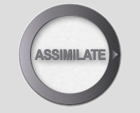 When we first learned of Autodesk filing a lawsuit against Assimilate in early October, we asked both companies to comment on the litigation. ASSIMILATE CEO Jeff Edson promised the company would provide fxguide with a statement regarding the suit, and now they have. (note: Autodesk declined to comment regarding pending litigation)
When we first learned of Autodesk filing a lawsuit against Assimilate in early October, we asked both companies to comment on the litigation. ASSIMILATE CEO Jeff Edson promised the company would provide fxguide with a statement regarding the suit, and now they have. (note: Autodesk declined to comment regarding pending litigation)
It probably comes as no surprise, but “ASSIMILATE denies that SCRATCH infringes any Autodesk copyright and denies that SCRATCH was copied from Cyborg. Autodesk’s complaint is an effort to assert copyright protection over user interface elements that are not subject to copyright protection for a variety of reasons.”
For the complete statement, click through to read more…..
The full statement from ASSIMILATE:
Autodesk Canada recently sued ASSIMILATE in the U.S. District Court for the District of Delaware. Autodesk alleges a single count of copyright infringement. ASSIMILATE wishes to assure its customers and potential customers that SCRATCH does not infringe any intellectual property held by Autodesk and that it will vigorously defend SCRATCH.
Autodesk’s threats regarding SCRATCH began in 2004. Autodesk claims that certain elements of the user interface of the SCRATCH software violate copyrights Autodesk allegedly holds in Cyborg. Although Autodesk does not market or sell the Cyborg product, Autodesk claims that it purchased the rights to Cyborg in 2002 from the liquidation sale of 5D Solutions.
ASSIMILATE denies that SCRATCH infringes any Autodesk copyright and denies that SCRATCH was copied from Cyborg. Autodesk’s complaint is an effort to assert copyright protection over user interface elements that are not subject to copyright protection for a variety of reasons. A review of Autodesk’s specific claims reveals that its alleged intellectual property consists of generic, graphical ideas that have been used in similar programs for years prior to Cyborg. It is a fundamental principle of copyright law that it does not protect mere ideas or things that necessarily flow from ideas. Nor can Autodesk control through copyright user interface elements that were in use by others prior to the development of Cyborg. For these and other reasons, ASSIMILATE believes that Autodesk’s complaint is meritless.
SCRATCH and Cyborg are also fundamentally different products. SCRATCH is a unique product in the filmmaking and post-production marketplace that reflects the data- centric shift that is now taking place in this market. The product is based around modern technology and is GPU-centric from the core up. After the 5D demise in 2002, Gerk Huisma developed a new generation of tools never produced in the market before. He met the need for a product that would help manage data-centric post production workflows and Digital Intermediates (DI), traditionally thought of as color grading and finishing. From his initial work that began five years ago, SCRATCH has evolved into the product it is today. The core architecture of SCRATCH has enabled the product to become the following:
— the data pipeline for dailies and review of visual effects/animation by post- production, companies, filmmakers, and studios
— the data prep and conform pipeline for many post production companies
— the color grading and finishing tool for many post product ion companies
These methodologies all depend on SCRATCH’s unique ability to visually manage and manipulate the ever growing amount of data-centric media now produced in the market.
Simply put, SCRATCH is a Digital Process Solution with a range of tools used in post production that does not include node-based compositing. In contrast, Cyborg was a node-based compositor and only a compositor.
The success of SCRATCH in the marketplace has very clearly been due to ASSIMILATE being in the market with next-generation data-centric technology, when the market was ready to make the shift to data-centric filmmaking and post production. ASSIMILATE has responded to market demand with a set of SCRATCH tools that enable a fully streamlined data workflow. ASSIMILATE is committed to defending itself against threats against us, and our ability and right to continue to invent and deliver new technology to our users and the filmmaking and post-production marketplace in general.

Thanks for your timely response guys. Now I better get back to my color grading in Scratch 🙂
Yohance Brown
Scratch Colorist
NYC
Hey Yohance you better work, Emery’s coming up behind you!
Now you guys only need to come up with a OpenGL accelerated multi-channel node based compositor to kick Autodesk in the balls 😉
And let crystal clear to them that innovation is not something you buy, it’s something you create.
They say it’s not a node-based compositor, in their defense that it’s not a copy. But I sure hope they’ll make it into a node based compositor as I think has been the plan for some time now.
Quote:go go go Assimilate!
” Now you guys only need to come up with a OpenGL accelerated multi-channel node based compositor to kick Autodesk in the balls 😉
And let crystal clear to them that innovation is not something you buy, it
As you may have read, the bully just got bigger too!
http://www.cgenie.net/cgenie-content/articles/autodesk-friend-or-foe.html
Seems like Autodesk are determined to become the most hated company in the history of creative software. When they can’t buy out the competition, they try to do the next best thing and sue it.
There was a comment posted here today that was a personal attack, these will not be tolerated and has been deleted.
Jeff
[…] a Reply Cancel reply You must be logged in to post a […]